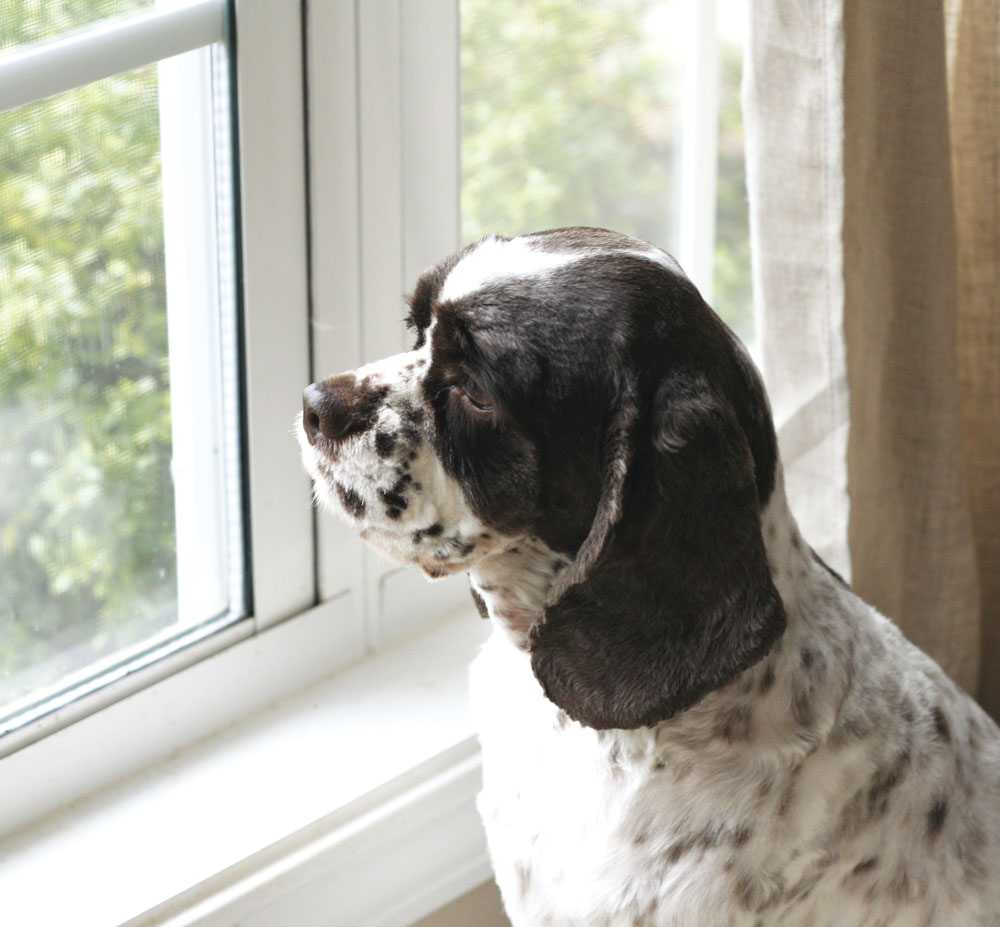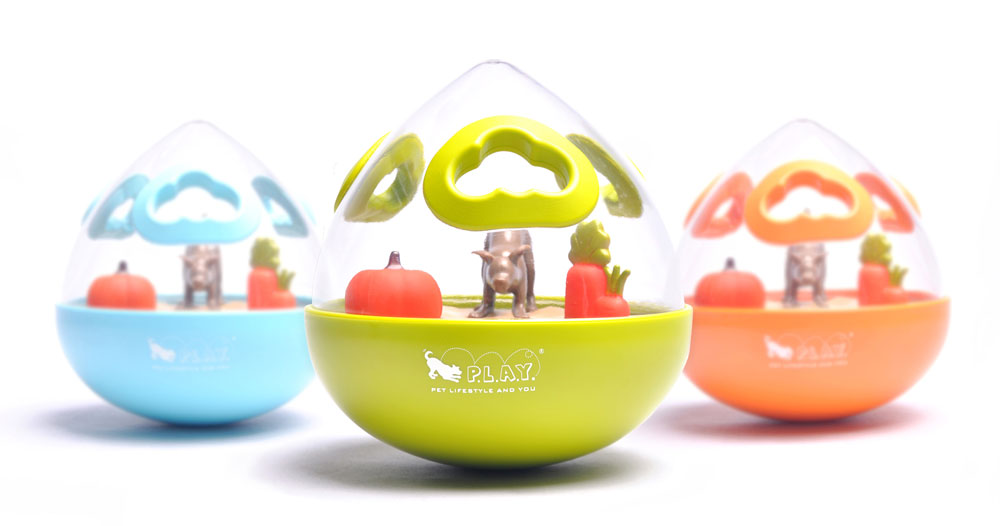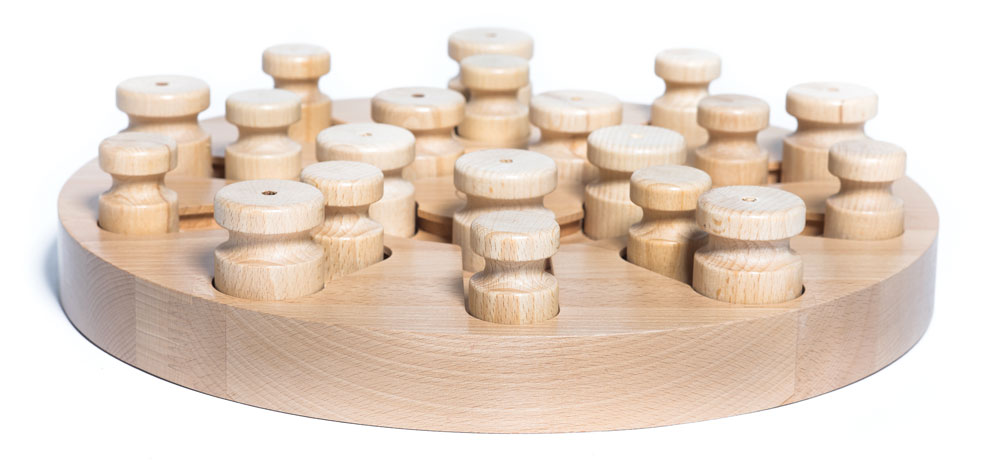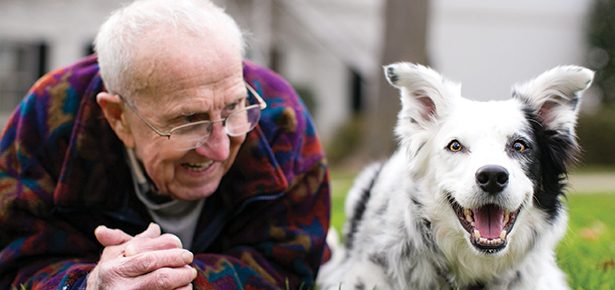

5 Ways to Help Your Dog Adjust To Alone Time
Ruff Transitions
During the COVID-19 quarantine, your best canine buddy probably got used to you being home all day. While you dealt with stress, fear, and confusion as to what day of the week it was, your dog was overjoyed to have you around day in and day out.
But once the shelter-at-home orders are lifted, how will Fido take the transition? Many dogs are just fine. They are incredibly adaptive creatures. You’re home all day? Awesome! You’re leaving for work again? Nap time! They roll with changes in stride. Other dogs, however, will have a hard time adjusting to your change in routine.
Signs your dog is not taking a change in routine well:
Vocalizations. This can include whining, barking or howling when you leave. A severely stressed dog will continue long after you’re gone.
Destructive chewing. If the chewing is focused on exits, such as your door or windows, then this is often a sign of separation distress or anxiety. Just because your dog is chewing destructively, however, doesn’t mean he’s upset you’re gone. A teenage Labrador who doesn’t get enough exercise and is left loose in the house can trash a room better than any drunken rock band. This isn’t anxiety so much as boredom and excess energy to burn.
Anorexia. Your dog will not eat when you’re gone. You can leave a bowl of food and it will remain untouched. He may start to eat when you come home. You can leave a tempting, food-stuffed chew toy and he ignores it while you’re away but tackles it when you’re present. When a dog is stressed, he’s not hungry.
Drooling. You come home and think your dog has peed in the house, but when you clean it up you realize it’s drool. This is a sign of canine anxiety.
Self injury. Some dogs try so hard to escape that they will hurt themselves. For example, a dog will dig, bite, and claw his way out of a crate to the point where he cuts himself trying to get out.
Image: artbybeth/bigstock.com
It may be that your dog exhibited some of these behaviours before you were quarantined, and now, with your dog accustomed to your all-the-time presence during shelter-at-home precautions, your absence is felt more keenly than ever. If your dog is exhibiting these signs, it’s time to take action.
A good place to start is with your veterinarian. Your dog needs a medical check-up to ensure there isn’t something physically wrong with him that could be causing him stress. You can’t treat this problem behaviourally if it has a physical cause, and your veterinarian will be able to help you rule out illness or injury.
Your dog is worried and anxious, so using old-fashioned intimidation techniques is not going to solve the problem. They could make them worse. For serious cases, it’s best to work with a professional trainer who uses modern, science-based methods of behaviour modification.
Here are five things you can do to get your dog off the worry train and onto a more peaceful track:
1. Practice your departure cues. What do you do when you’re ready to leave? Pick up your keys? Put on shoes? Grab a purse? Randomly throughout the day, do all these things, but don’t leave. Pick up your keys, put on your shoes, grab your purse, and walk around the house for a minute. Then, put down your keys, take your shoes off, and put your purse down. These are triggers for your dog. By randomly practicing these cues throughout the day without departing, your dog will get more comfortable with them since they don’t always mean you are going to leave.
2. Make arrivals casual. When you do come home, don’t have a welcome parade. Be calm. Casually greet your dog. Wait until your dog is less frantic before you pay attention to her.
3. Implement an exercise plan. Make sure your dog is getting enough exercise for her breed (or breed combination) and age. If you have a teenage terrier that never gets cardio exercise, she has plenty of energy to pace, worry, and get anxious.
4. Teach your dog an out-of-sight stay. Cue your dog to Sit or Down. Take one step back, then return to your dog and give her a treat. Take two steps back, then return to your dog and give her a treat. Keep building up your steps until you can turn a corner and go out of sight. Always return to your dog and release her from her Stay. Don’t call her to come to you. You want her to learn that you return, and she gets rewarded for staying in place.
5. Get your dog obsessed with food-stuffed toys. Start when you are home. Serve every meal out of a puzzle toy, not a food bowl, so your dog learns to love them. When your dog is readily eating all meals out of toys, then start using them when you leave.
You love your dog, but you can’t be there for her 24/7. Having a dog that barks and howls when you’re gone is also a challenge when you live in a condo or apartment. Neighbours don’t always care that your dog is stressed, only that your dog is noisy. Now that you’re back to your normal routine, work on helping your dog adjust. It’ll be better for her mental health, and yours.
Fun puzzle toys to mentally engage your dog
The Best Boredom Busters!
The uniquely designed Wobble Ball 2.0 from P.L.A.Y. encourages mental stimulation as your dog maneuvers the ball to dispense treats, keeping your pup occupied while engaging her senses. ($19, petplay.com)
The Mandala and Star puzzle from My Intelligent Pet includes two puzzles in one, challenging your dog’s concentration and dexterity as they knock over towers and move pieces in search of treats. ($52, myintelligentpets.com)
Join the newsletter and never miss out on dog content again!
"*" indicates required fields
By clicking the arrow, you agree to our web Terms of Use and Privacy & Cookie Policy. Easy unsubscribe links are provided in every email.








